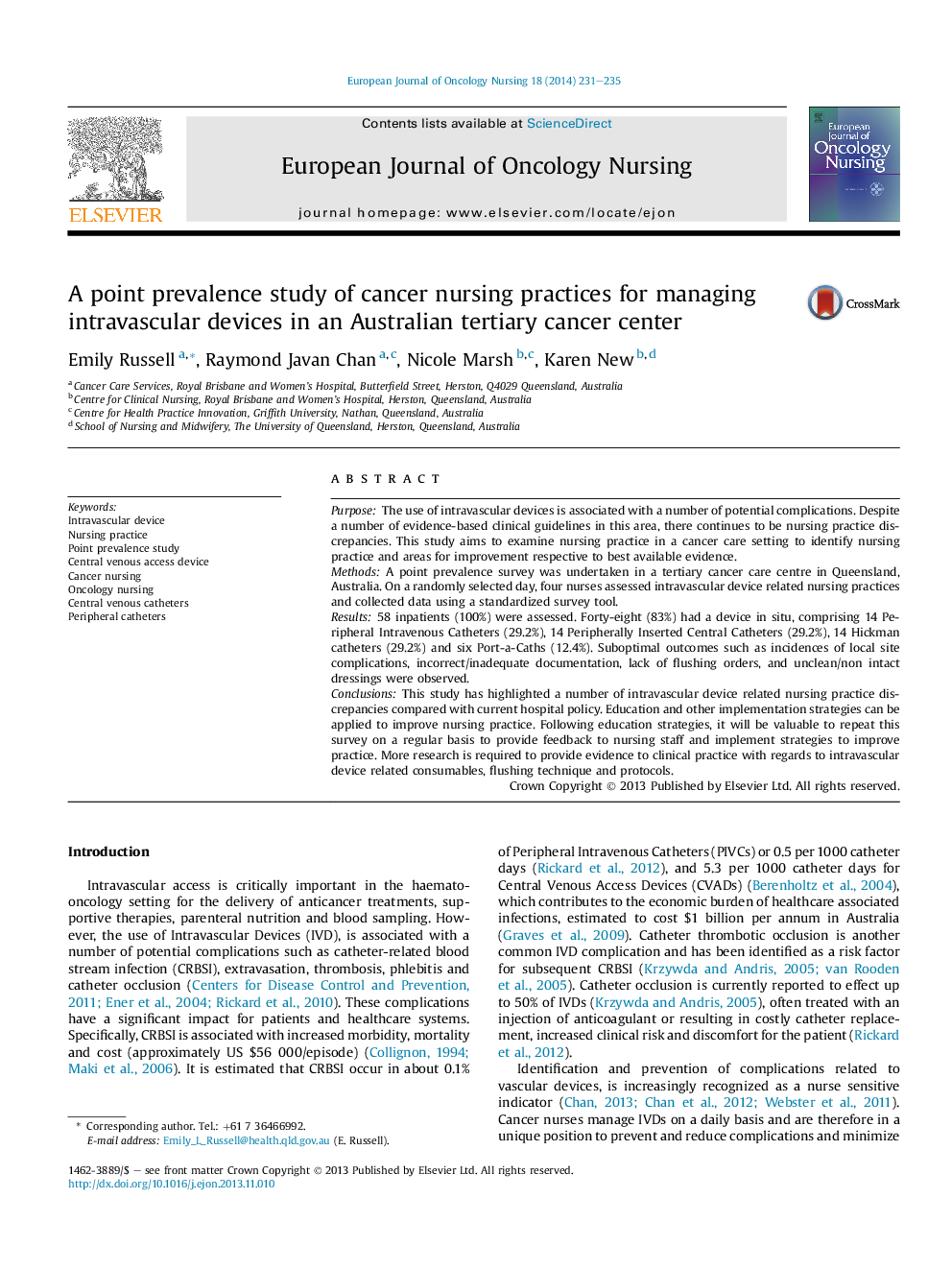| Article ID | Journal | Published Year | Pages | File Type |
|---|---|---|---|---|
| 2648662 | European Journal of Oncology Nursing | 2014 | 5 Pages |
PurposeThe use of intravascular devices is associated with a number of potential complications. Despite a number of evidence-based clinical guidelines in this area, there continues to be nursing practice discrepancies. This study aims to examine nursing practice in a cancer care setting to identify nursing practice and areas for improvement respective to best available evidence.MethodsA point prevalence survey was undertaken in a tertiary cancer care centre in Queensland, Australia. On a randomly selected day, four nurses assessed intravascular device related nursing practices and collected data using a standardized survey tool.Results58 inpatients (100%) were assessed. Forty-eight (83%) had a device in situ, comprising 14 Peripheral Intravenous Catheters (29.2%), 14 Peripherally Inserted Central Catheters (29.2%), 14 Hickman catheters (29.2%) and six Port-a-Caths (12.4%). Suboptimal outcomes such as incidences of local site complications, incorrect/inadequate documentation, lack of flushing orders, and unclean/non intact dressings were observed.ConclusionsThis study has highlighted a number of intravascular device related nursing practice discrepancies compared with current hospital policy. Education and other implementation strategies can be applied to improve nursing practice. Following education strategies, it will be valuable to repeat this survey on a regular basis to provide feedback to nursing staff and implement strategies to improve practice. More research is required to provide evidence to clinical practice with regards to intravascular device related consumables, flushing technique and protocols.
